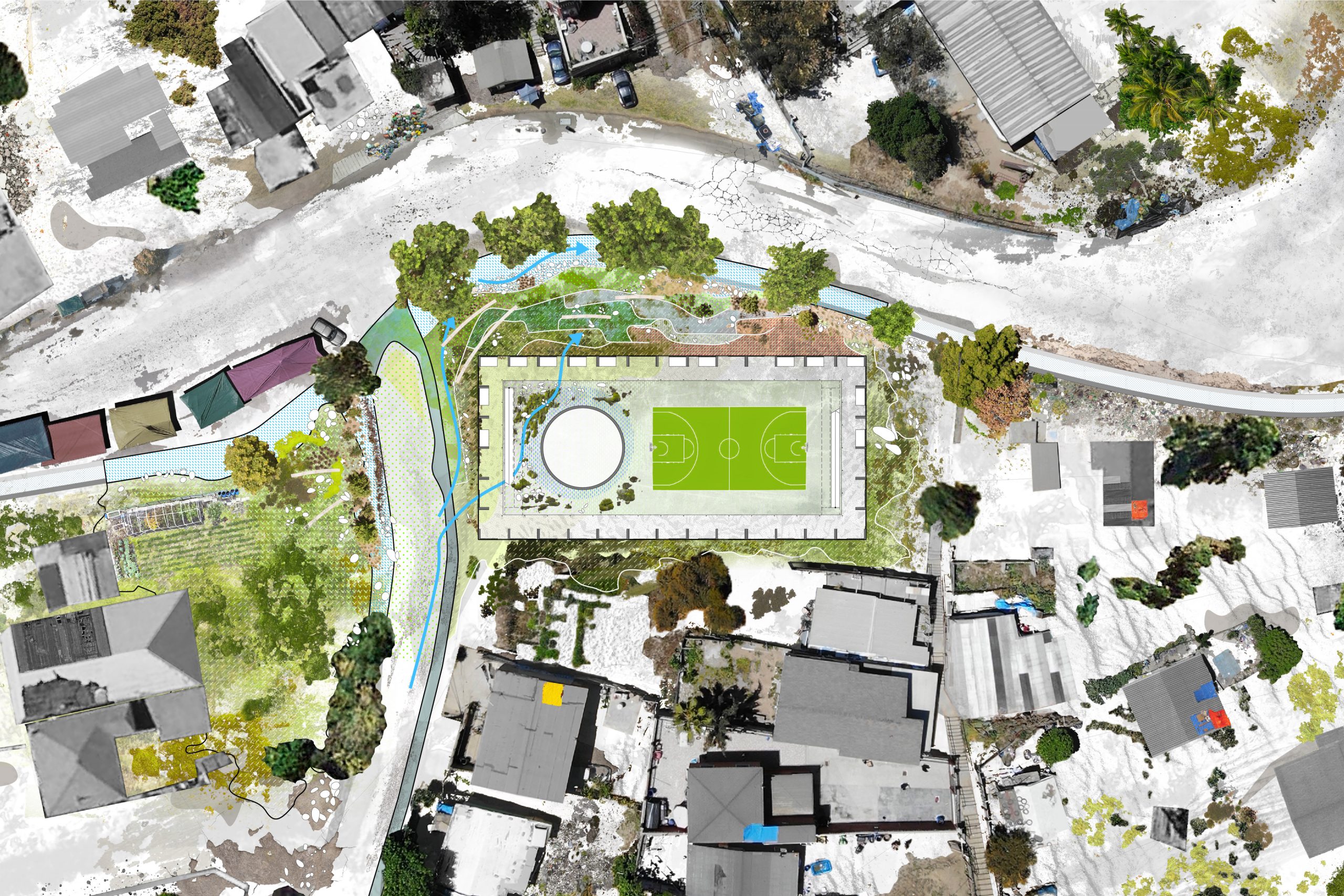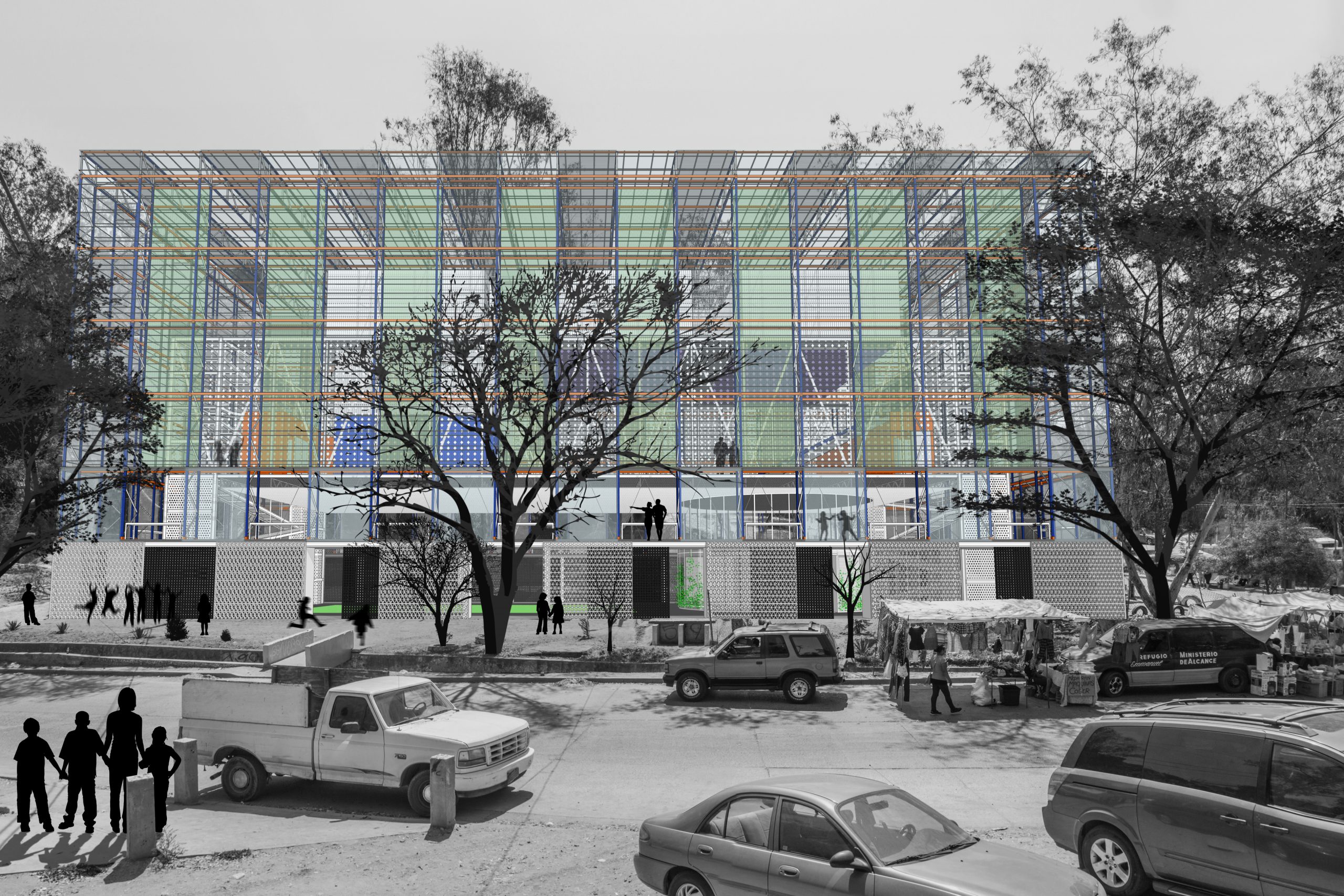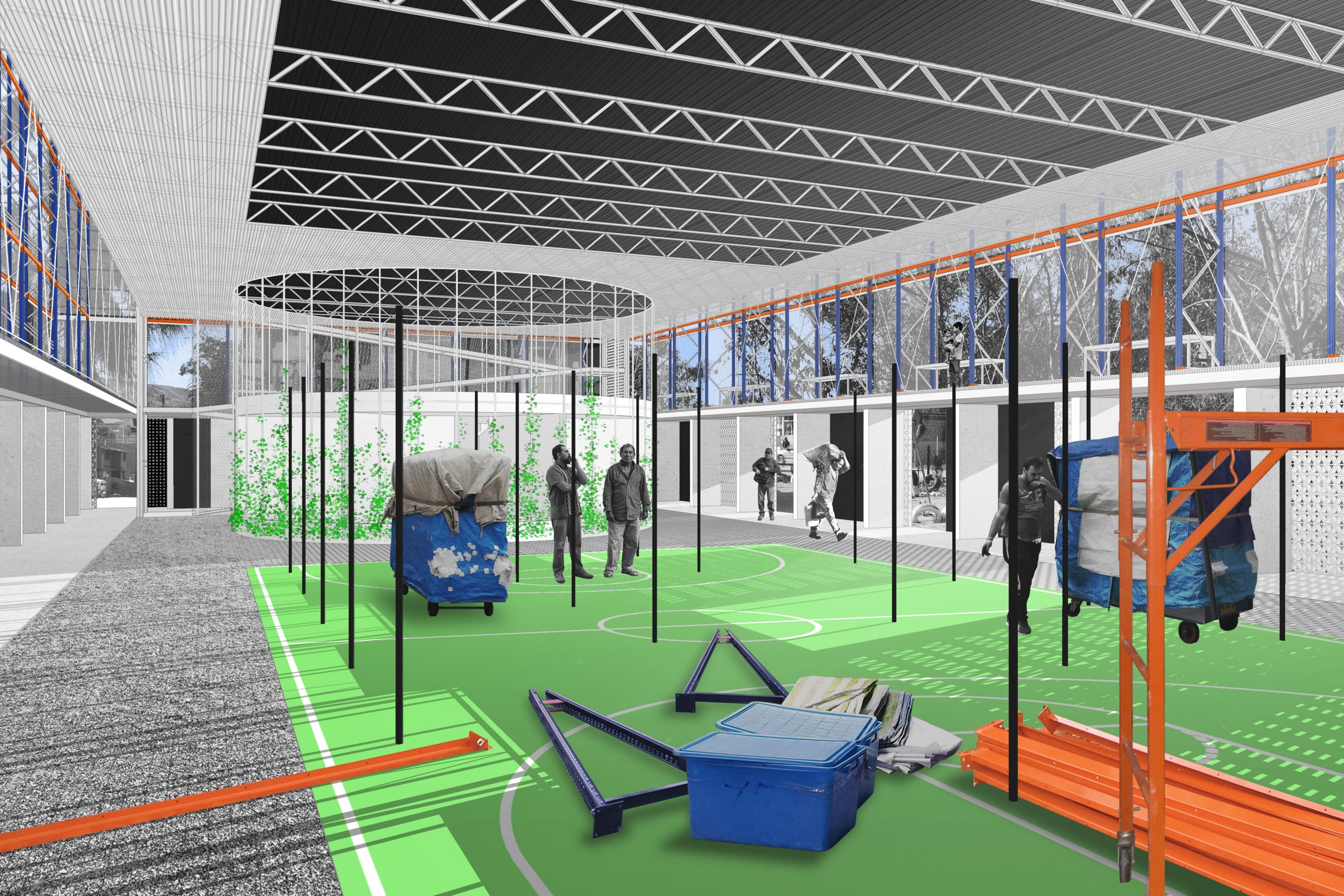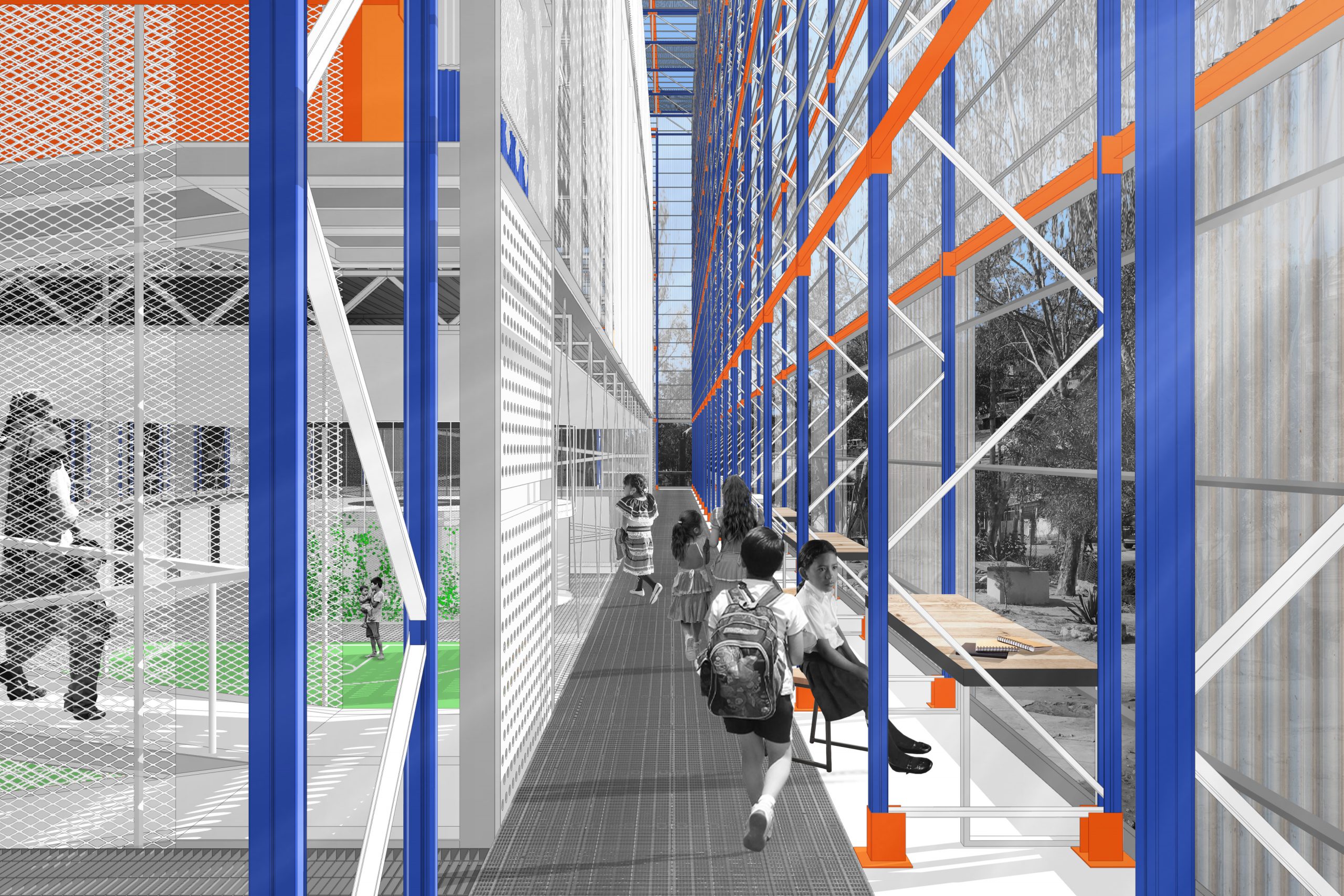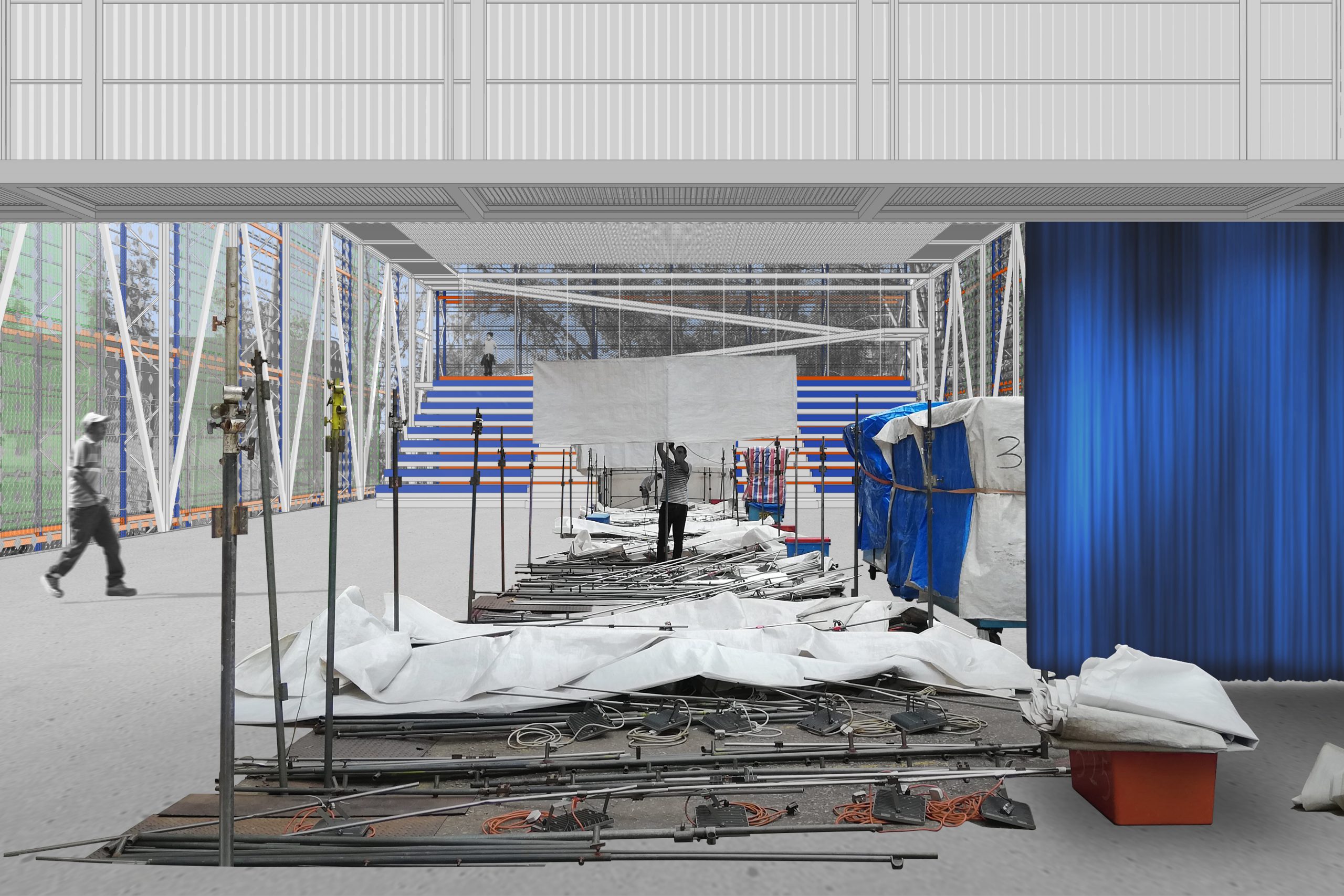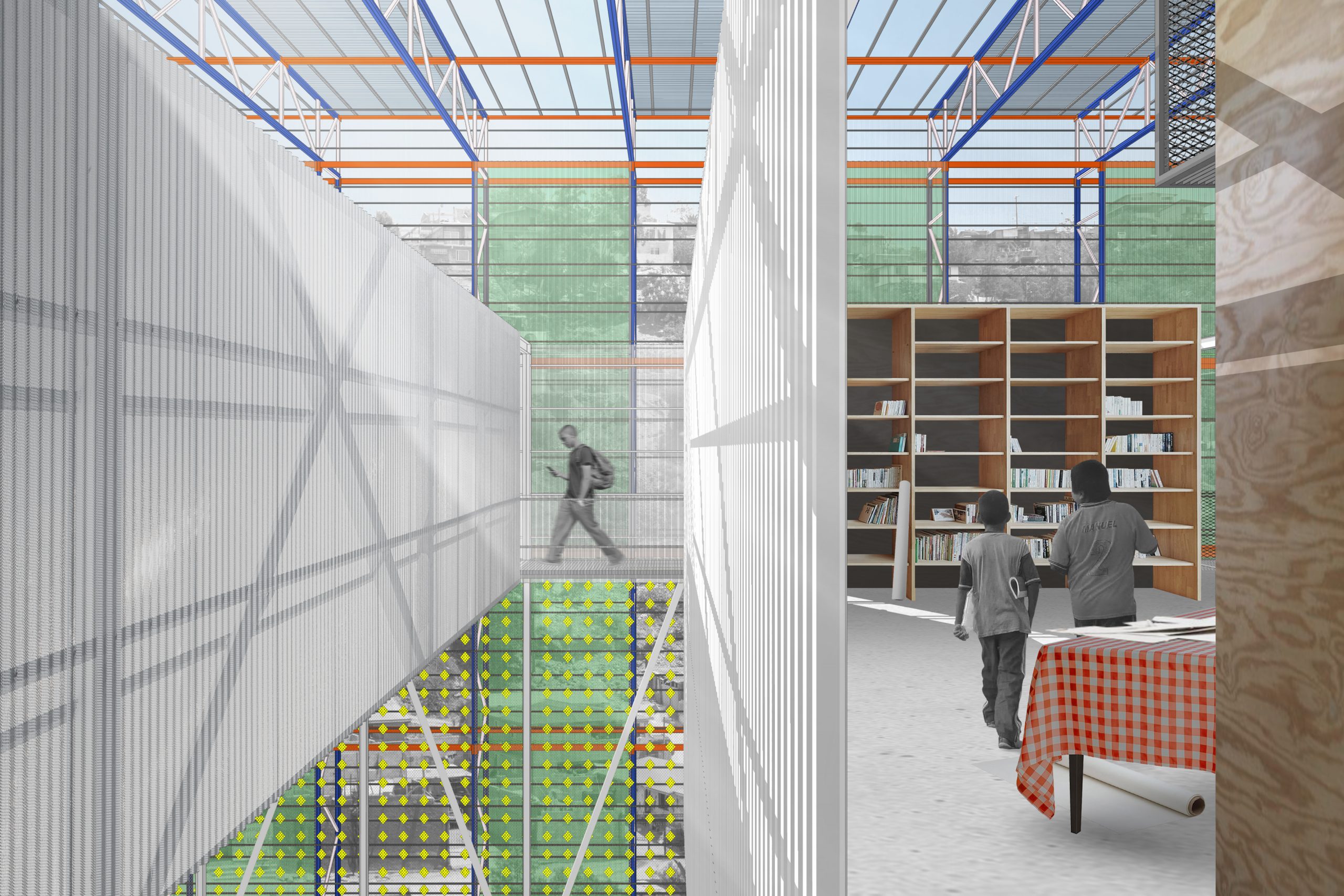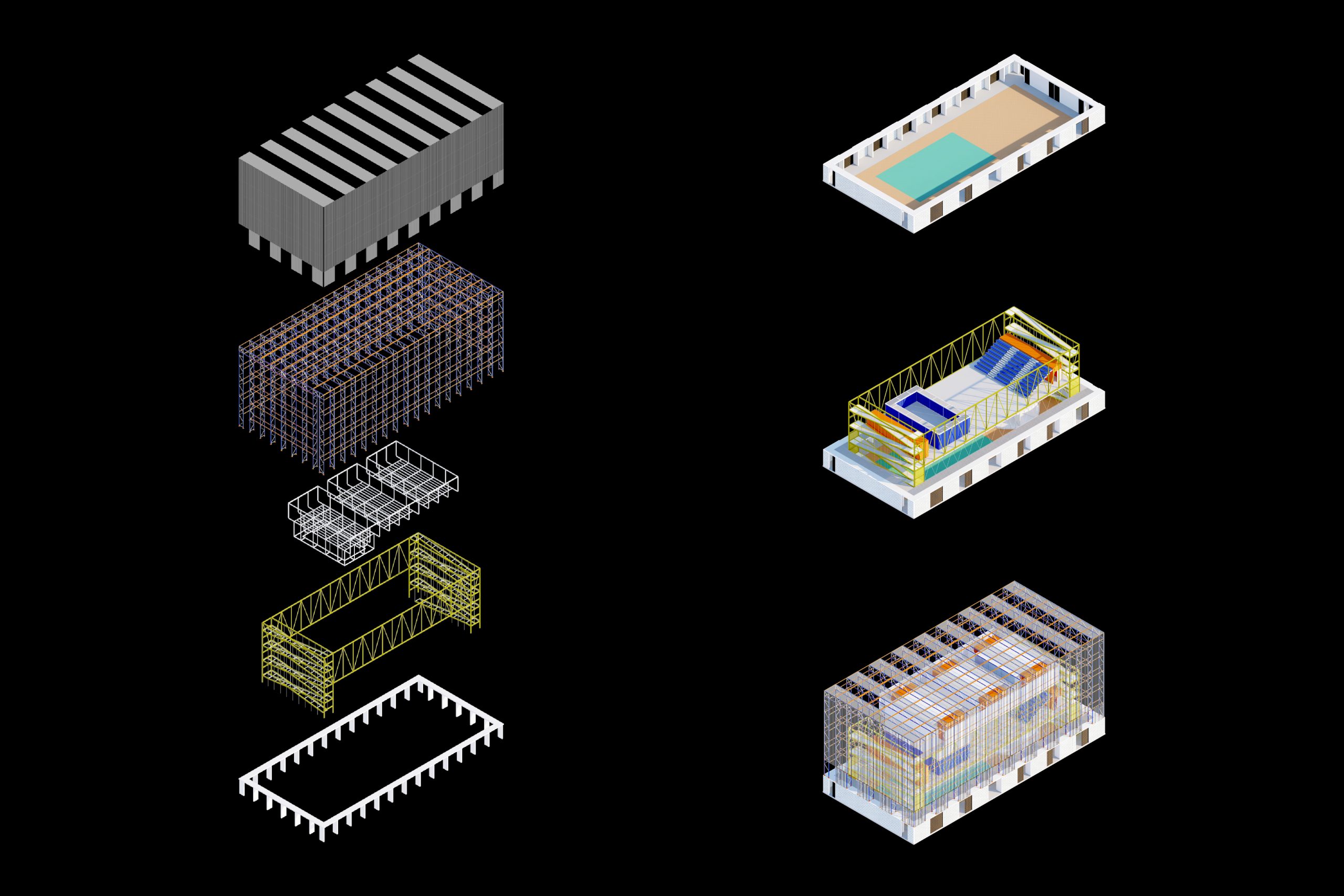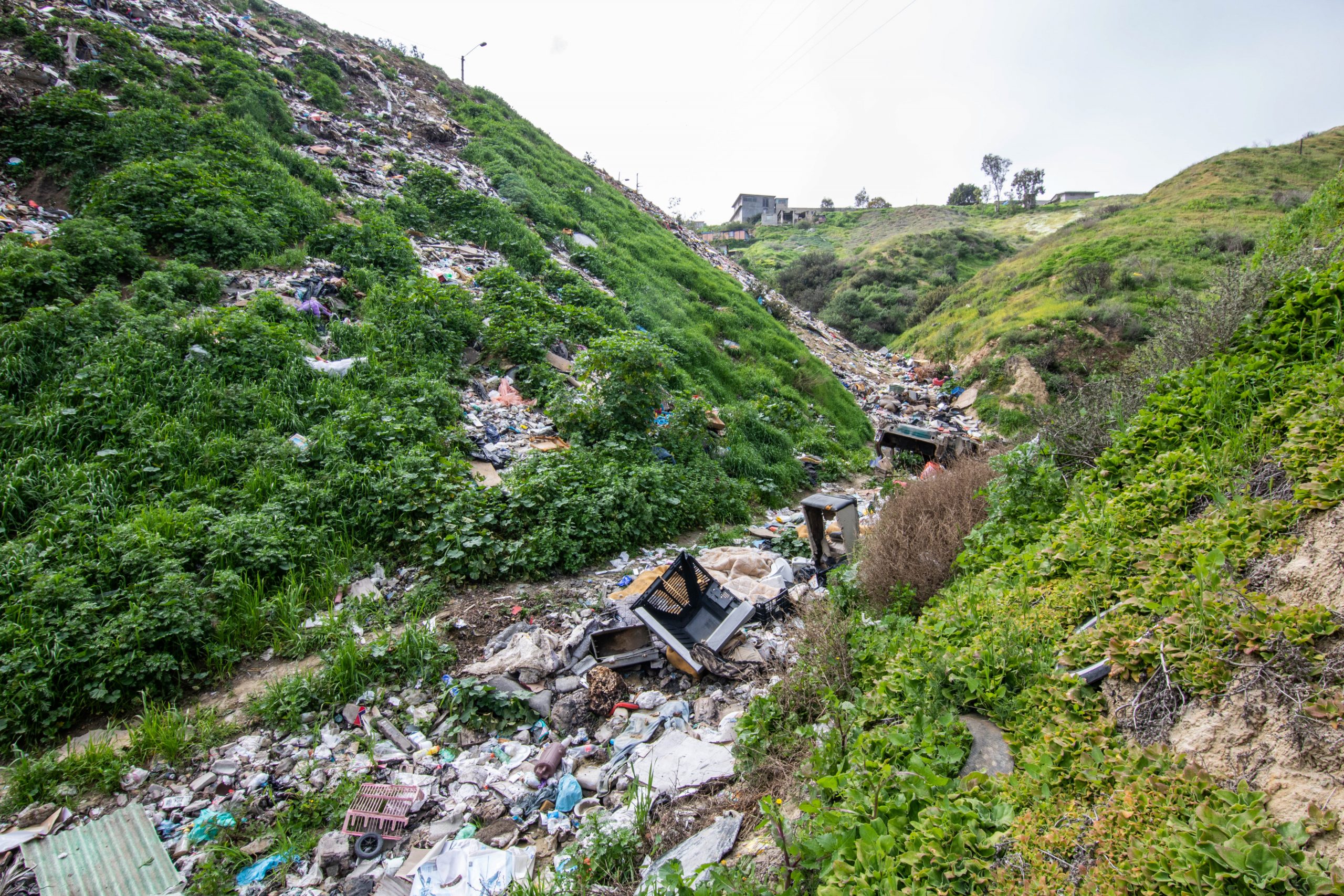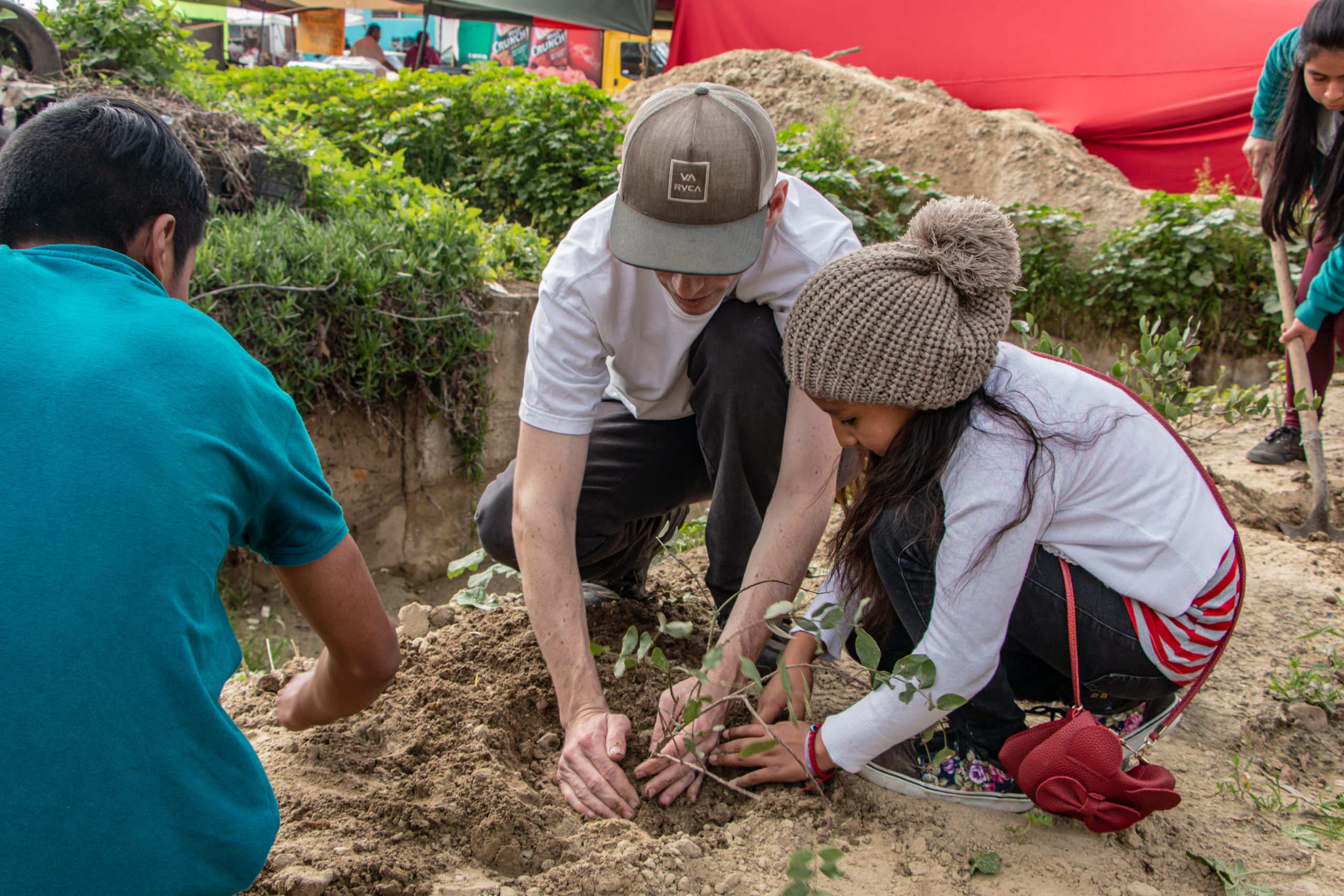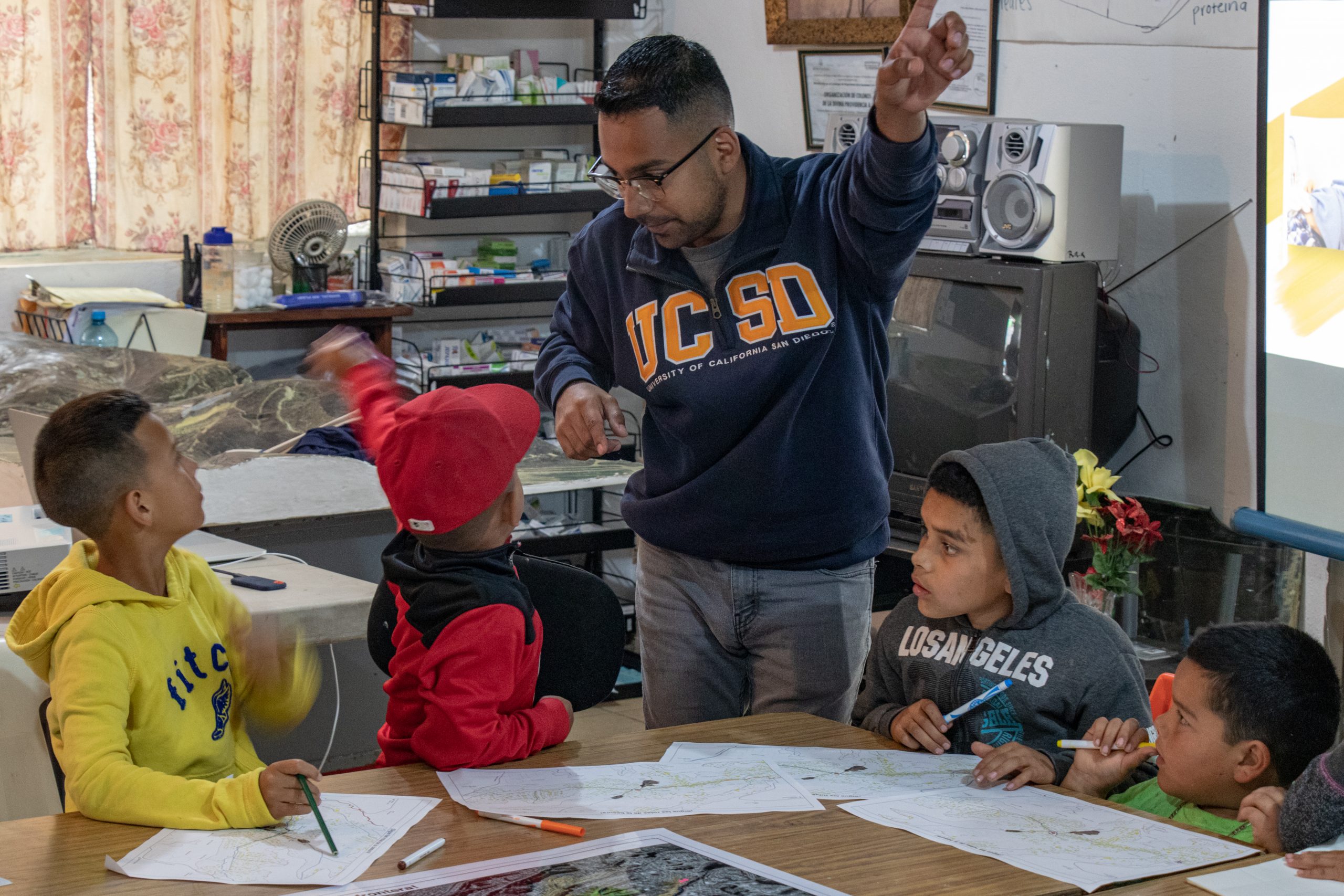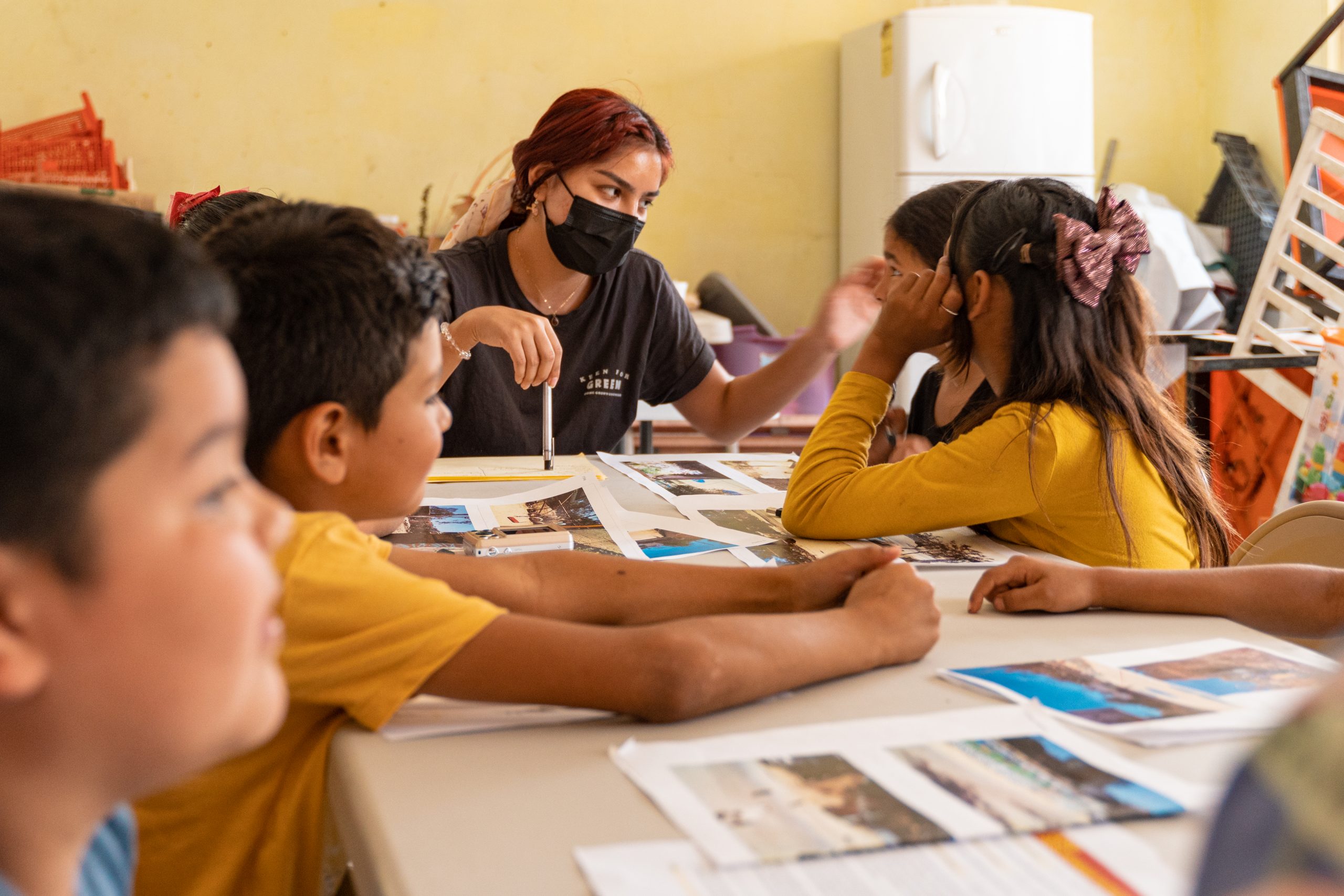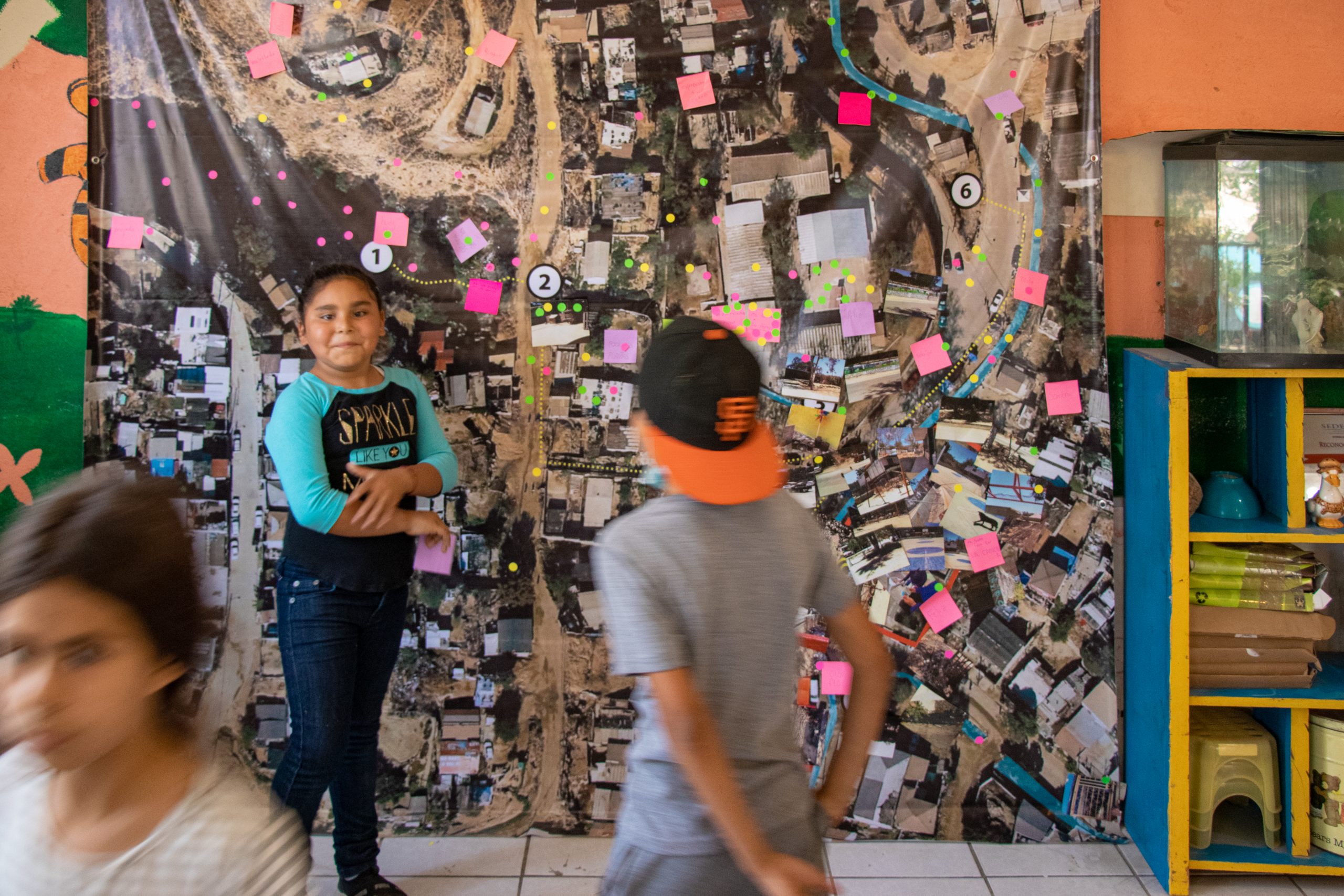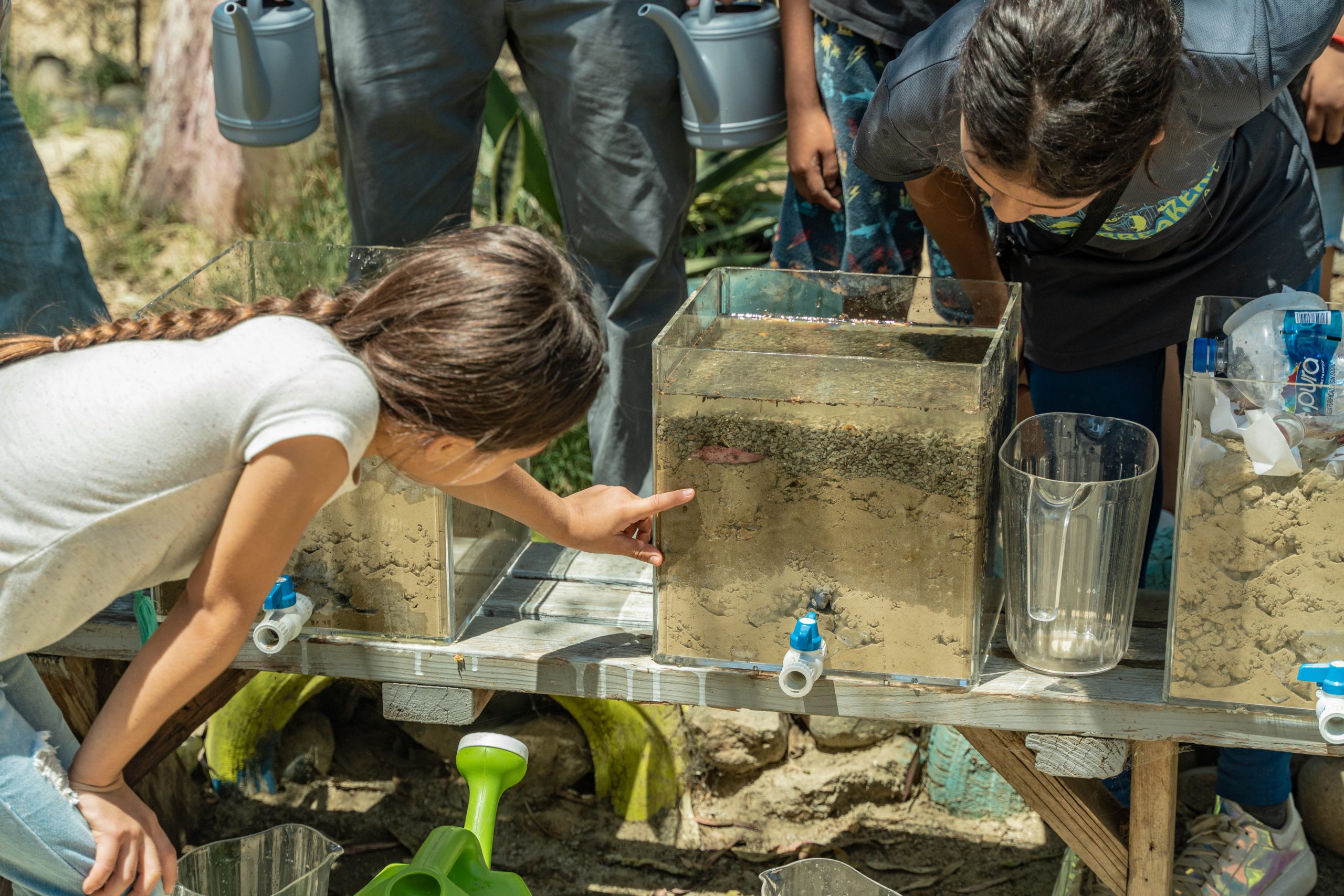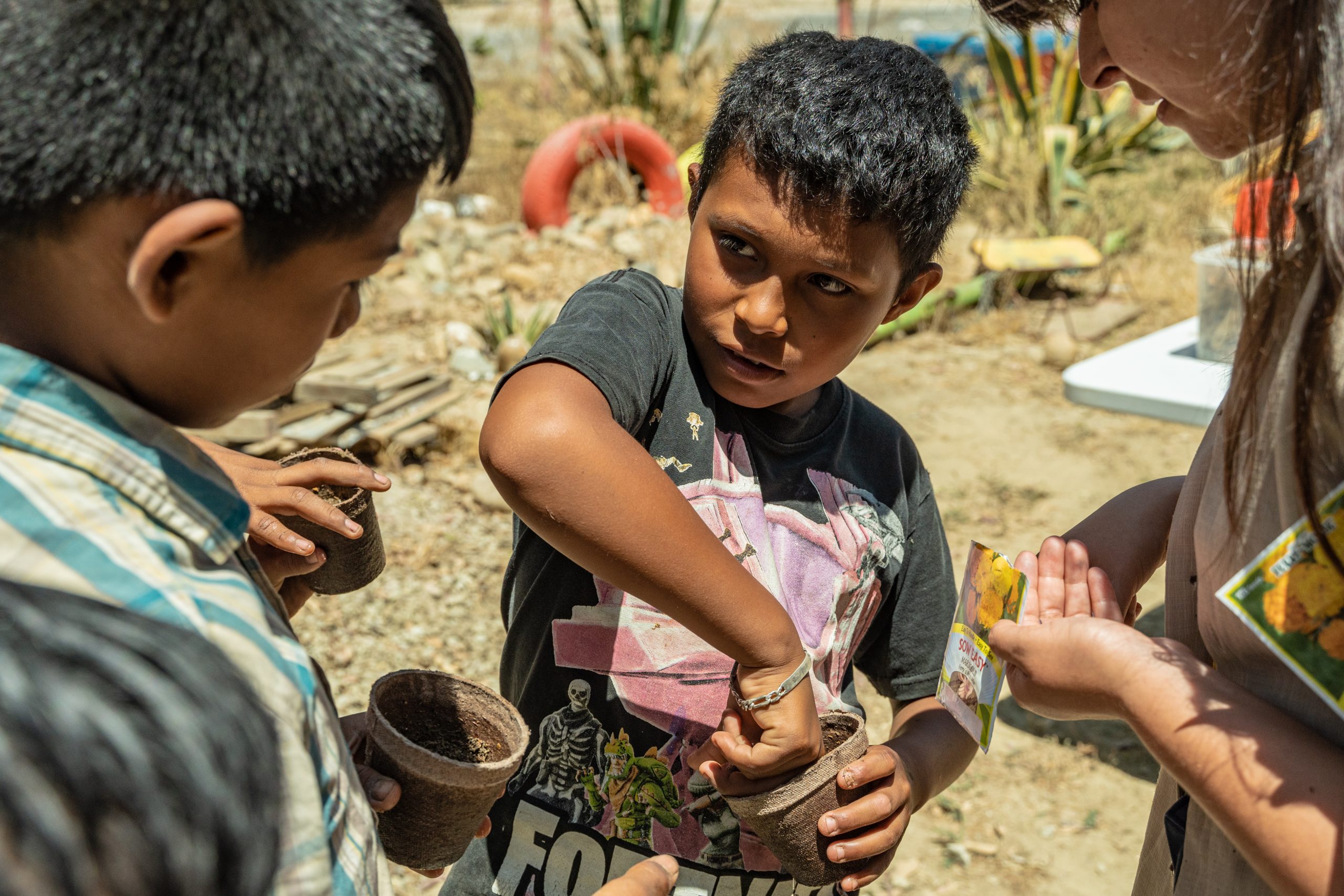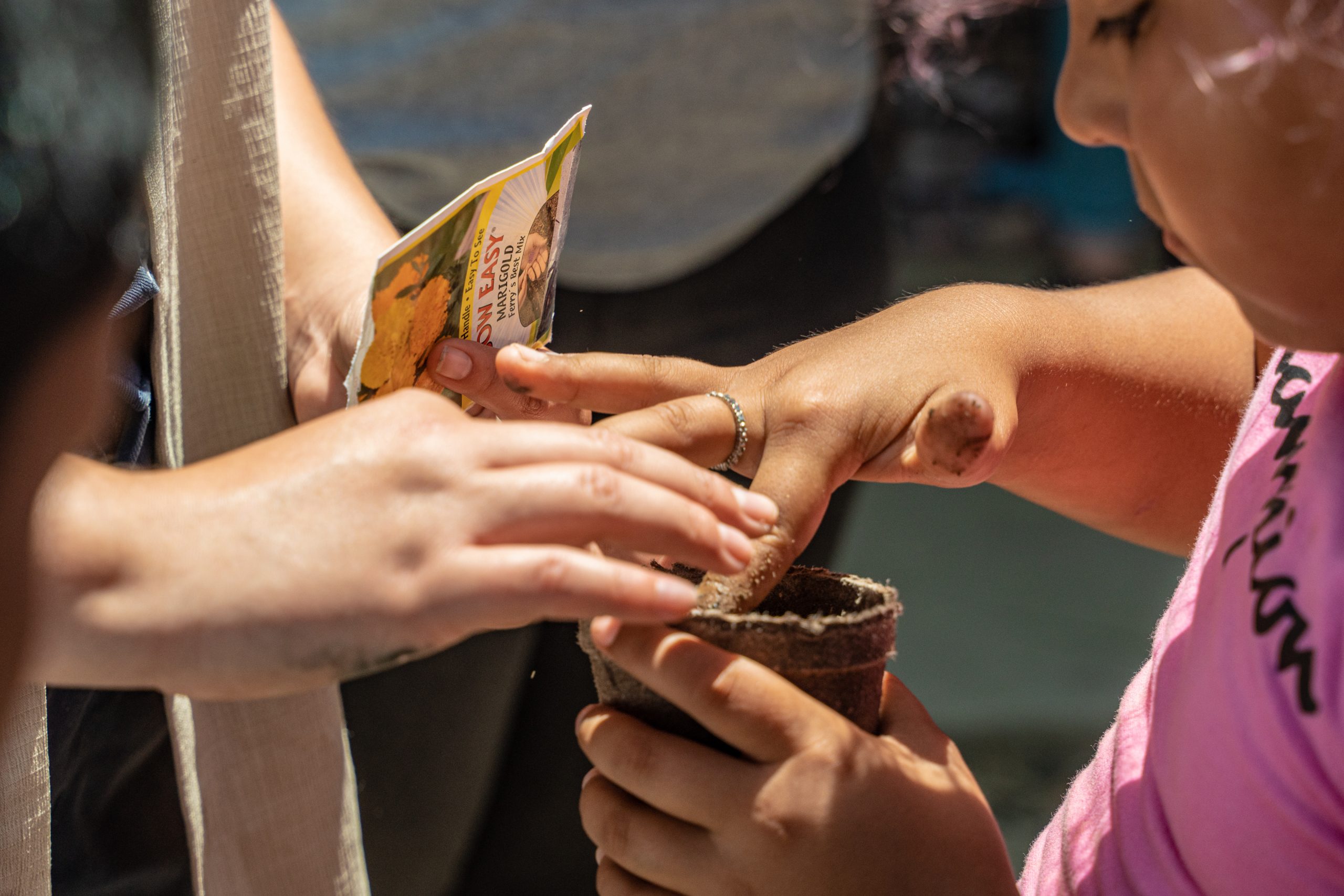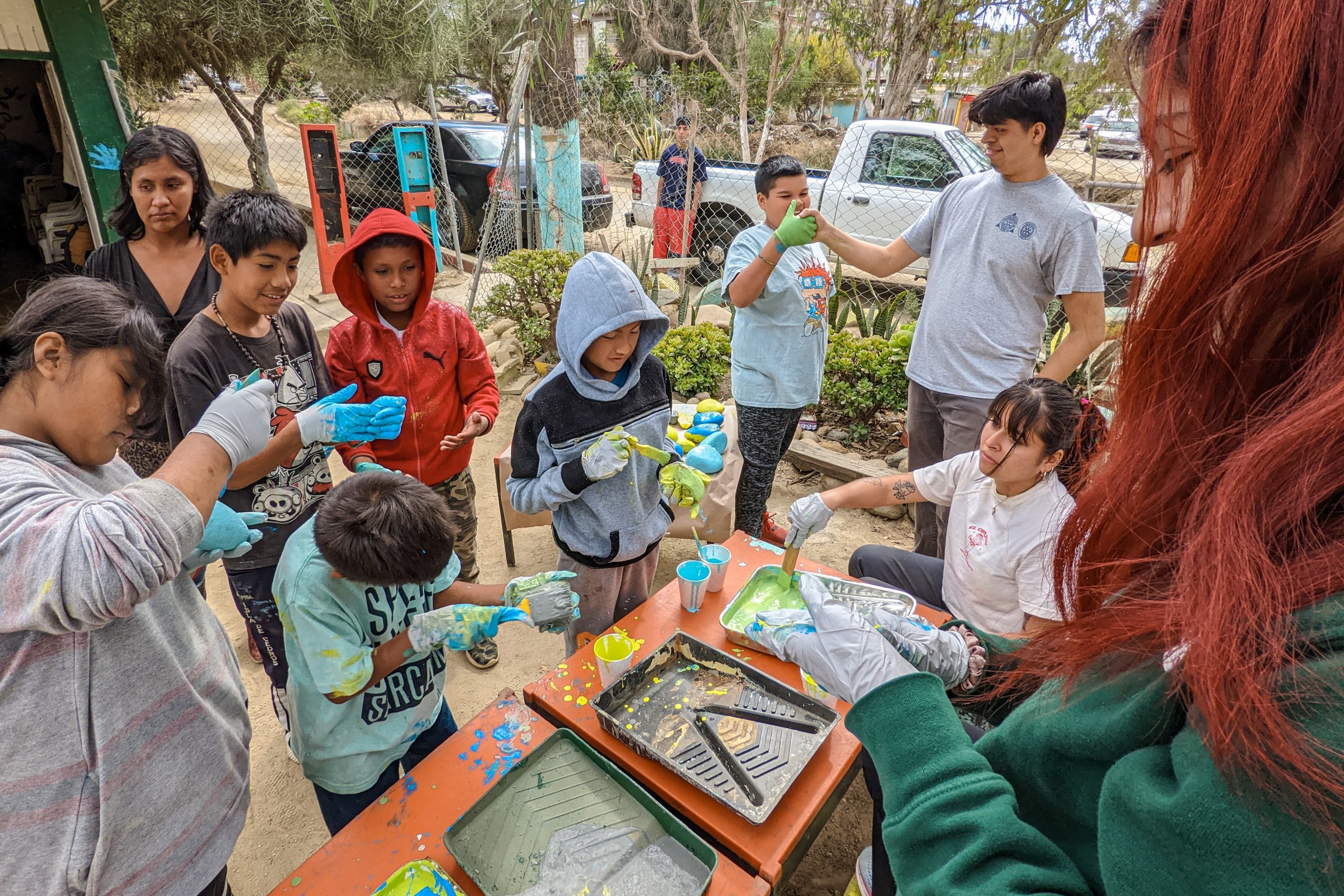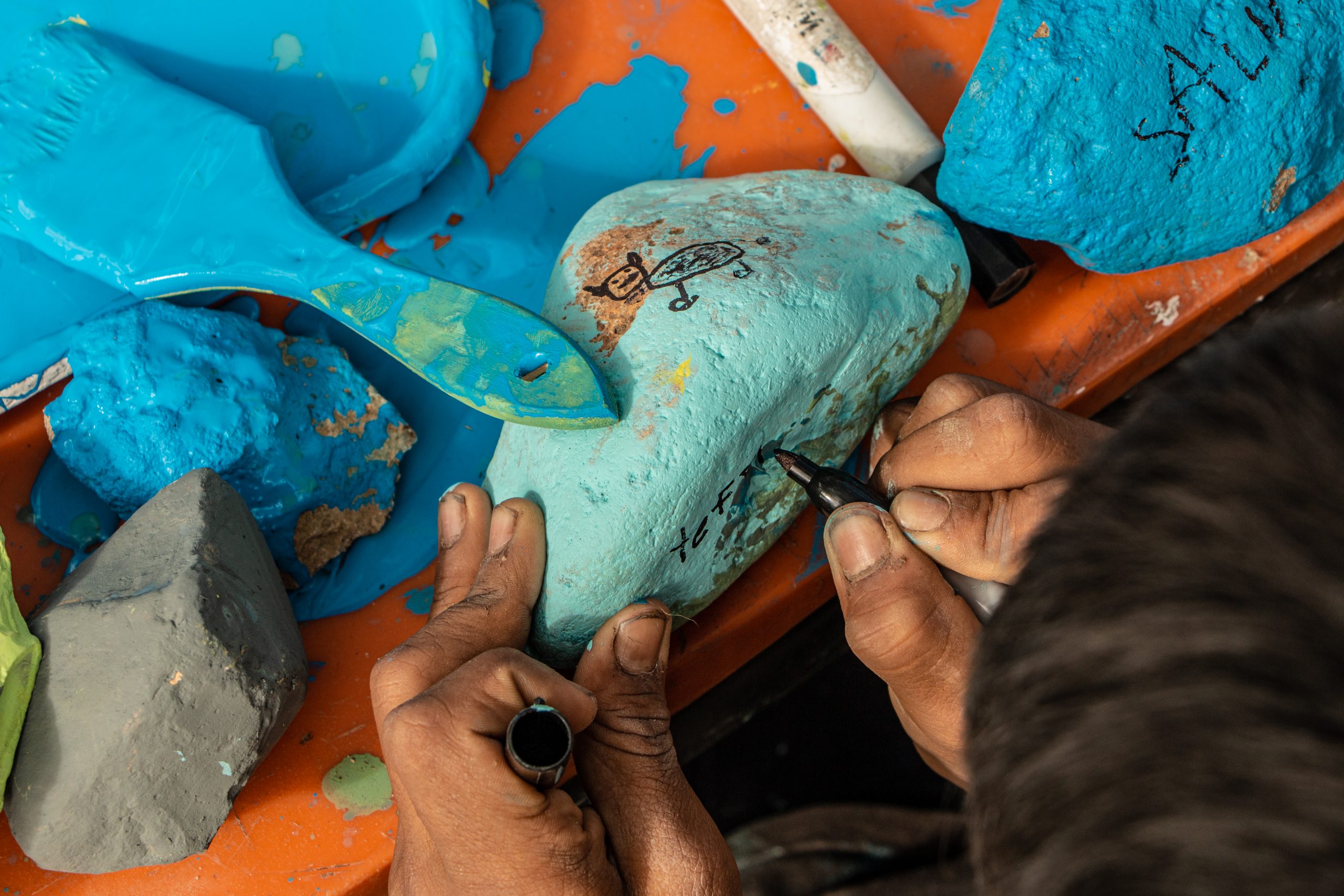UCSD-Divina
Community Station
Children are the cross-border citizens of the future
The UCSD-Divina Community Station is a mixed-use civic space in an informal canyon settlement in Tijuana, dedicated to cross-border environmental protection. The Station sits just 37 miles from the UC San Diego campus.
Location + Partnership
Los Laureles Canyon, Tijuana, BC, Mexico
The UCSD-Divina Community Station is located in the neighborhood of Divina Providencia, in the Los Laureles Canyon, a slum of 85,000 people on the periphery of Tijuana, Mexico. Laureles is considered Latin America’s last slum, crashing against the US-Mexico border wall. Its proximity to the Tijuana River Estuarine Reserve on the San Diego side, makes this station an ideal site for investigating new strategies of bioregional interdependence across the international border. The UCSD-Divina Community Station is located across the street from Primaria Basilio Badillo, one of two overcrowded, and underfunded, primary schools in the Laureles Canyon.
Colonos de la Divina Providencia
Colonos de la Divina Providencia is a Mexican A.C. (civil association) dedicated to community participation in environmental challenges and local economic development, directed by Rebeca Ramirez, an activist who inherited the organization from her mother who sat on the basketball court site to protect it from squatting. Operating as a community center, the nonprofit delivers a variety of social services, including meals for youth and seniors, a health clinic, senior services, youth and educational programming, cultural and environmental activities and workshops, including trash and sediment cleanups in local parks and canals, and the reforestation of key ecological zones—much of this in collaboration with UC San Diego researchers and students.
Tijuana River National Estuarine Research Reserve
The Tijuana River National Estuarine Research Reserve preserves, protects, and manages the natural and cultural resources of the Tijuana River Estuary by focusing on research and education with compatible recreation and resource use. The Reserve encompasses beach, dune, mudflat, salt marsh, riparian, coastal sage scrub, and upland habitats surrounded by the growing cities of Tijuana, Imperial Beach, and San Diego. Critical issues confronted by the Reserve include habitat conservation and restoration, endangered species management, management of the wastewater from Mexico, sediment management, and the integration of recreation.

Physical Infrastructure
A Multi-use Civic Space that Evolves Incrementally
Located in the Divina Providencia neighborhood of Laureles Canyon, the UCSD-Divina Community Station presently operates in a community center building owned by our nonprofit partner Colonos de la Divina Providencia. A 24,000 sq ft structure in presently in development, designed as a flexible space that will evolve incrementally over time to accommodate indoor and outdoor activities. The UCSD-Divina Community Station will house economic incubator spaces, art and science fabrication labs, a health clinic, a technology lab, and a variety of spaces for informal markets, performance, sports, community events, and a small prepa (a high school, the first in the canyon). The structure itself performs as pedagogical tool, through the environmental and social systems it contains. A 3D model was exhibited at the Cooper Hewitt Smithsonian National Design Museum as part of its 2016 exhibition, By the People.
The UCSD-Divina Community Station is envisioned as a 24,000 sq ft flexible space that houses an economic incubator, art and science fabrication labs, a health clinic, a technology lab, spaces for informal markets, performance, sport, community events, and a small prepa (a high school, the first in the canyon). The structure itself performs as pedagogical tool, through the environmental and social systems it contains.
The UCSD-Divina Community Station is an homage to the post-war French architect Jean Prouvé, renowned for his development of prefabricated social housing. In partnership with Bob Rubin and Stéphane Samuel, we are repurposing the actual remaining pieces of one of Prouvé’s three salvaged Maison Tropicale structures into our design for the station. The UCSD-Divina Community Station is essentially a public house for the residents of this Mexican border settlement, in the spirit of Prouvé’s Maison du Peuple.
The UCSD-Divina Community Station is presently in development, and is designed to evolve in layers, incrementally over time, as resources become available.
Social Infrastructure
Environmental Literacy and Cross-Border Citizenship
Through community-based educational and environmental programming we promote civic engagement, youth leadership, environmental literacy and economic development.
The UCSD-Divina Community Station is a dedicated site of student and community learning in the informal canyon community of Divina Providencia, a site of severe marginalization just a few miles from our campus. UC San Diego students do not need to travel great distances to engage sites of poverty and deprivation. They can exercise global responsibility right here, a few miles from our campus.
The Divina site is an important node for cross-border waste management, since waste-water and trash move from active dumping sites above and end directly at our site. We are working closely with the nonprofit to develop educational workshops for residents and youth that increase literacy about waste and environmental health. We also develop environmental activities that increase food access, and transform vacant and neglected spaces into green infrastructure to conserve water and reduce waste and pollution.
We have also co-developed a 5-station afterschool computer lab and a pedagogic garden as educational enhancements for primary school students (grades 1-6) who attend a half-day of school at the Primaria Basilio Badillo across the street.
Our goal in the next stage is to scale up this programming in the new UCSD-Divina Community Station building, to increase the programmatic capacity of the nonprofit. The building itself is designed as a pedagogical tool, rendering transparent the social and energy systems it contains.
The UCSD-Divina Community Station is a public space that educates. Ultimately we believe children are the cross-border citizens of the future.
Fonna Forman and Teddy Cruz, “Critical Proximities at the Border: Redistributing Knowledges Across Walls,” in Spatial Practices: Modes of Action and Engagement in the City, ed. Melanie Dodd. London: Routledge, 2019 https://www.routledge.com/Spatial-Practices-Modes-of-Action-and-Engagement-with-the-City-1st-Edition/Dodd/p/book/9780815351870
Fonna Forman and Teddy Cruz, “Interdependence as a Political Tool: Three Building Blocks for Gaza,” Open Gaza, eds. Vyjayanthi Rao and Michael Sorkin, New York: UR Books, 2019 https://www.terreform.info/open-gaza
Fonna Forman and Teddy Cruz, “The Cross-Border Community Stations: Notes on Redistributing Knowledge Beyond Walls,” Back to the Sandbox: Art and Radical Pedagogy, ed. Jaroslav Anděl, Minneapolis: University of Minnesota Press, 2019 https://www.upress.umn.edu/book-division/books/back-to-the-sandbox
Fonna Forman and Teddy Cruz, “Citizenship Culture and the Transnational Environmental Commons,” Nature’s Nation: American Art and Environment, eds. Karl Kusserow and Alan Braddock. New haven: Yale University Press, 2018 https://yalebooks.yale.edu/book/9780300237009/natures-nation
Fonna Forman and Teddy Cruz, “Cross-Border Citizens,” Catalogue Essay, in US / Mexico Border: Place, Imagination and Possibility, Craft & Folk Art Museum, Pacific Standard Time: LA/LA, September 2017. http://www.jorgediegoetienne.com/news/2017/9/27/book-the-us-mexico-border-place-imagination-and-possibility
Fonna Forman and Teddy Cruz, “Rethinking Permanence, Democratizing Space,” Catalogue Essay, in Building As Ever; 2017 California-Pacific Triennial of Art, Orange County Museum of Art, pp.131-138, 2017. https://www.amazon.ca/2017-California-Pacific-Triennial-Building-Ever/dp/3791356763
Fonna Forman and Teddy Cruz, “Where is the Public Today? Designing for a New Civic Imagination.” Catalogue Essay in By the People: Designing a Better America, Cooper Hewitt, Smithsonian Design Museum, 2016 https://www.cooperhewitt.org/2016/11/28/spatializing-citizenship-public-culture-at-the-usmexico-border/
Seoul Biennial of Architecture and Urbanism, Seoul, September 2019. http://www.seoulbiennale.org/www_2019/index.php
Nature’s Nation: American Art and Environment, traveling exhibition: Crystal Bridges, Bentonville, Arkansas, 2019. https://crystalbridges.org/exhibitions/natures-nation/
Critical Care: Architecture and Urbanism for a Broken Planet, Architekturzentrum Wien, Vienna, April 2019 https://www.azw.at/en/event/critical-care-architektur-und-urbanismus-fuer-einen-planeten-in-der-krise/
Nature’s Nation: American Art and Environment, Princeton University Art Museum, Princeton, September 2018. https://artmuseum.princeton.edu/art/exhibitions/2818
By the People, traveling exhibition: David J. Sencer CDC Museum, Centers for Disease Control and Prevention, Atlanta 2018. https://www.cdc.gov/museum/exhibits/by-the-people.htm
By the People, Museum of Art and Design at Miami Dade County, Miami, 2018. https://news.mdc.edu/press_release/mdcs-museum-of-art-and-design-reopens-with-by-the-people-designing-a-better-america-exhibition/
Back to the Sandbox: Arts and Radical Pedagogy, Western Gallery, Bellingham, Washington, 2018. https://westerntoday.wwu.edu/news/back-to-sandbox-art-as-radical-pedagogy-western-gallery-exhibition-opens-jan-9
The U.S.-Mexico Border: Place, Imagination, and Possibility, traveling exhibition: 516 ARTS, in partnership with the Albuquerque Museum, 2018
The U.S.-Mexico Border: Place, Imagination, And Possibility Craft & Folk Art Museum (CAFAM), Los Angeles, 2018
By the People, Cooper Hewitt Smithsonian National Design Museum, 2015 https://collection.cooperhewitt.org/objects/420777903/

